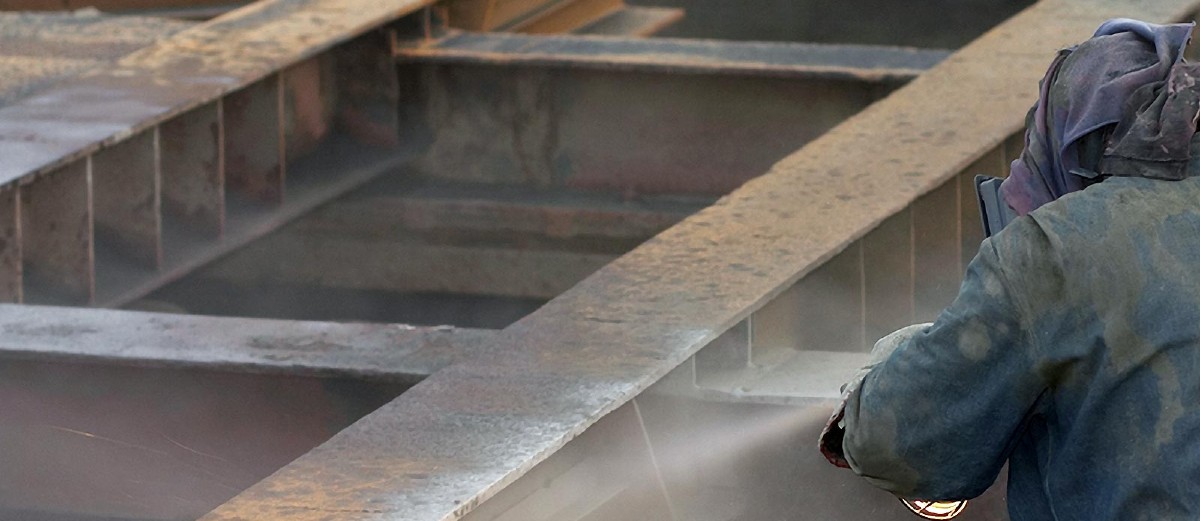
Do I Need a Permit for Media Blasting, Abrasives Blasting or Sandblasting?
The Air Quality and Climate Division typically does not require an Air Permit for media blasting, commonly called abrasives blasting or sandblasting, although sand is seldom used anymore. While an Air Permit may not be required, reasonable precautions must still be taken to minimize and control any dust generated. For facilities that require an Air Permit for other reasons, additional requirements may be imposed in their Air Permit to control dust from production related media blasting. Facilities that cause a dust nuisance or that blast materials that may generate air toxic concerns, such as leaded paint, may also require an Air Permit. Please contact the Permits Section if you have questions regarding permit applicability.
What is Media Blasting and Why Should I be Concerned?
Media blasting refers to the process of propelling an abrasive media against the surface of a material in order to clean, smooth, or roughen the surface, usually in preparation of the surface for subsequent treatment such as painting. Different blasting media may be used depending on the intended affect and may include sand, metal shot, or even crushed walnut shells. Some blasting is done wet. Dry media blasting may generate significant amounts of dust, both from the breakdown of the blasting media itself as well as from the material being blasted. If reasonable precautions are not taken, this dust may cause nuisance problems as well as health concerns for both the worker and others exposed to the dust. Blasting medias containing crystalline silica (sand) that can break down into inhalable particles are of extra concern due to the potential for causing silicosis disease. Media blasting of surfaces containing contaminants such as leaded paint are also of serious concern.
What Air Pollution Requirements Apply to Sandblasting?
The Vermont Air Pollution Control Regulations Section 5-231 [Prohibition of Particulate Matter] limits the allowed amount of dust from dust generating processes and requires that reasonable precautions be taken to minimize and control this dust. The Regulation Section 5-241 [Prohibition of Nuisance and Odor] further prohibits any person or facility from causing a nuisance beyond the facility property line:
A person shall not discharge, cause, suffer, allow, or permit from any source whatsoever such quantities of air contaminants, or odors beyond the property line of a premises, which will cause injury, detriment, nuisance or annoyance to any considerable number of people or to the public or which endangers the comfort, repose, health or safety of any such persons or the public or which causes or has a natural tendency to cause injury or damage to business or property.
Finally, Regulation Section 5-261 [Control of Hazardous Air Contaminants] provides the Agency added authority to require further emission control measures if emissions of hazardous air contaminants, such as crystalline silica or lead, may exceed their respective emission thresholds.
What Measures Should I Take When Media Blasting?
When feasible, consideration should be given to conducting media blasting wet in order to minimize the potential for dust. When dry abrasive blasting must be done, blast cabinets or blast rooms should be used that contain the dust and filter the air. When media blasting must be done outdoors, temporary enclosures or tarps should be used to contain the dust. Abrasive blasting outdoors on windy days should be avoided. Traditional sand blast media containing crystalline silica sand should be avoided unless blast cabinets or blast rooms are used that properly contain the dust and filter the air. Unfiltered air should not be vented directly outside. Filters must be properly designed and maintained to ensure effective control of dust. Further precautions may still be needed in many cases to protect the workers. Crystalline silica free blast medias should always be used whenever feasible.
More information:
For a discussion of air pollution emissions from abrasive blasting please see the US EPA document AP-42 Compilation of Air Pollutant Emission Factors, Section 13.2.6 Abrasive Blasting
